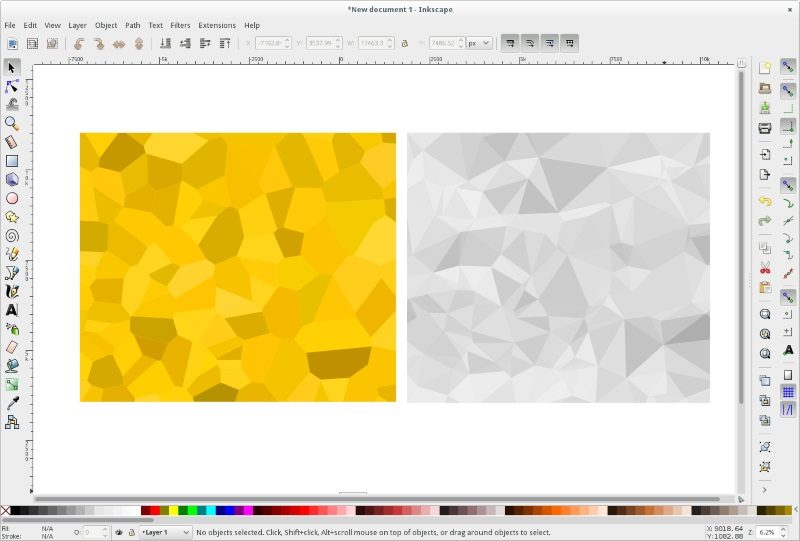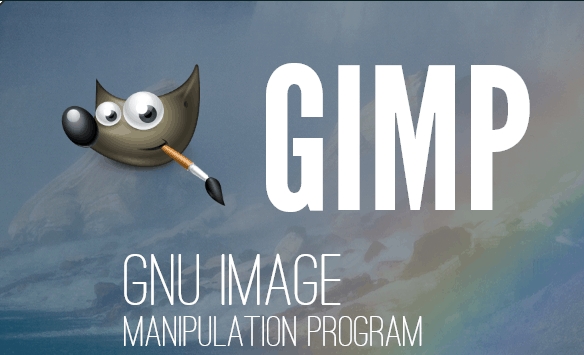It’s worth taking into consideration the design programs free software provide when you intend to design on a budget. While, in many cases, free programs can’t compare to the paid ones, there are many options that’ll work just fine for both novice and professional designers.
However, please note that there are some limitations to this selection. A few of the choices in this list includes the best free graphic design software program for both new and veteran customers.
1. Inkscape
Inkscape is a free program for creating vector drawings. It was originally created to create vector images, but these skills have migrated, and the program now has been used in a wide array of applications.

It comes with all the standard tools that are typically located within conventional graphic design software, including a shape tool, a pen tool, and a transformation tool. The availability of these tools allows people to create new designs and themes just like they might in Adobe Illustrator.
Much of Inkscape’s initial disadvantages have been resolved by a group of active users, making for a vibrant, lively community overall. Nevertheless, the user experience is slow compared to the competition, and the Inkscape UI is a bit difficult for novices to navigate.
2. GIMP
Thanks to its recognition, most designers have used or even heard of GIMP. Among those who are most likely to make use of the software, it offers some of the most feature-packed and highly flexible completely free graphic design software available. Indeed, its pedigree can be traced back to 1996.

The GIMP software Beginner-friendly image editing application GIMP has a myriad of automated image correction plug-ins in addition to a highly intuitive interface. You won’t be without Photoshop after using GIMP as it has so many image editing tools, including painting, filling, and color correction.
GIMP is a good photo editing program. Here’s what you need to know when working with it.
GIMP includes its own file manager, very similar to Adobe Bridge, as a result of which transferring files between the two programs is extremely convenient. Nevertheless, GIMP does not incorporate Photoshop plugins, which can be a frustration to most users.
3. Blender
Blender has become the go-to graphic design software. This is not without good reason, because the software comes packed with advanced features. Blender also surpasses any other 3D model tool because of its size.
You can use blender (an application program used to create multimedia content) to stimulate green screens, generate rigging, generate high-quality renderings, and do post-processing effects. The program also contains a tool for making edits to a face, as well as settings for turning off background. With assistance from certain tools, you can record moving objects and manipulate camera positions as well.
Because of its extensive array of design tools, it will take time for new users to get accustomed to its interface.
4. Pixlr
Pixlr is one of the most newbie-friendly image editing tools with numerous of AI-powered tools. The best part is that users can run it from within their web browsers.
This graphic design software is one of the most user-friendly photo editing tools available on the internet. What’s more, it offers many AI-powered tools, such as AI photo colorization, AI photo filters and many more.
Pixlr has two versions, Pixlr E and Pixlr X. The former features a limited number of editing tools that can aid you in creating simple alterations to your pictures, such as resizing and inserting text. Pixlr X, however, has a number of powerful editing instruments like the Photoshop program. Pixlr also has its own app designed for smartphones and tablets.
5. Canva
Canva is a free design app that enables users to design and edit graphics. The Pro version also supplies a wealth of important functions, such as scheduling social media posts and the ability to import photos from a much larger library of public domain photos. This library offers illustrations, photos and clipart images on literally every topic from microphoneclipart to dancing cat images.
Canva is primarily created for ease of use; it uses the drag-and-drop function. Nevertheless, Canva users may be capable of acquiring much with their design skills, thanks to the comprehensive tool’s extensive functionality. Canva allows users to create brochures, presentations, and also edit pictures with the built-in image editor.
The most significant disadvantage of this graphic design software is that it may be overly basic for more sophisticated users. Additional features include payable content only available in the paid version of this tool.
6. Paint.NET
Paint.NET is a graphic design software that runs on Microsoft Windows, is considerably easier to use than the default version, and is well suited for creating two-dimensional pictures.
A comparable interface can be found in Microsoft Paint, but with more advanced features and more functionality. Support is provided for all basic image manipulation functionalities in Paint.NET. In addition to this, the program makes use of multiple layers to allow for more advanced editing opportunities as well.
If you do have a high DPI display, you have the option of taking advantage of excellent scaling features built into the program.
Overall, Paint.NET is supposed to replace MS Paint, but it can’t hold a candle to design tools, such as Adobe Photoshop or Illustrator, due to Paint.NET’s limited collection of editing tools. The inability to compare Paint.NET to other programs because of its lack of cross-platform support is another one of its flaws.
Several free graphic design software offer great functionality.
As you may observe from this listing, quite a few of these graphic design tools offer approximately equivalent functionality to their paid counterparts. However, professionals in graphic design are usually better off opting for paid software than free instruments, because of the range of functions that software provides.
But if you’re on a budget, GIMP or Blender are great options because they are designed for people with more experience.
In addition, don’t forget to, most of the gratis graphic design software on the Internet are financed by volunteer work. So you can think about donating a little or a lot to be able to keep these programs going indefinitely.